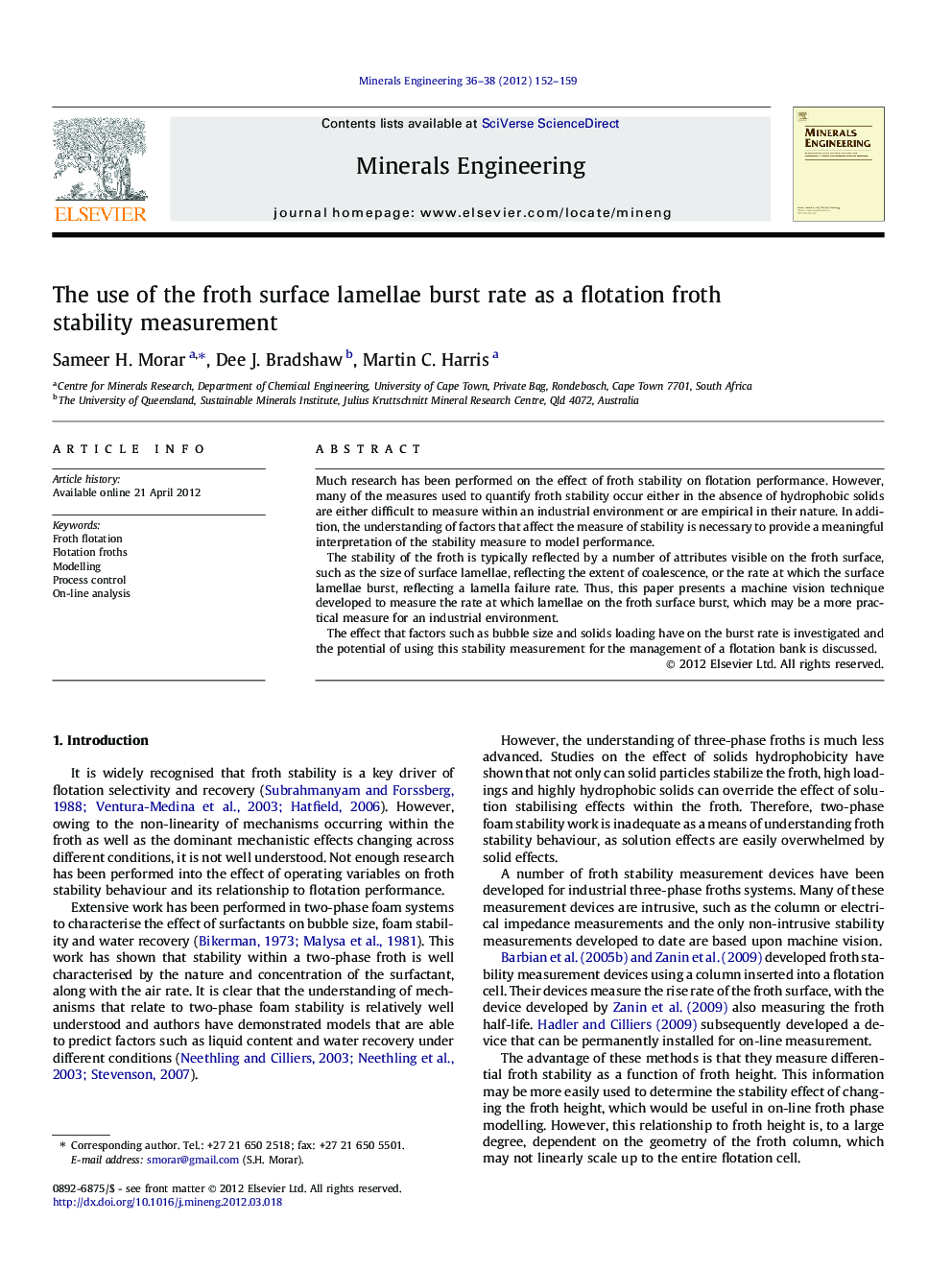| Article ID | Journal | Published Year | Pages | File Type |
|---|---|---|---|---|
| 233532 | Minerals Engineering | 2012 | 8 Pages |
Much research has been performed on the effect of froth stability on flotation performance. However, many of the measures used to quantify froth stability occur either in the absence of hydrophobic solids are either difficult to measure within an industrial environment or are empirical in their nature. In addition, the understanding of factors that affect the measure of stability is necessary to provide a meaningful interpretation of the stability measure to model performance.The stability of the froth is typically reflected by a number of attributes visible on the froth surface, such as the size of surface lamellae, reflecting the extent of coalescence, or the rate at which the surface lamellae burst, reflecting a lamella failure rate. Thus, this paper presents a machine vision technique developed to measure the rate at which lamellae on the froth surface burst, which may be a more practical measure for an industrial environment.The effect that factors such as bubble size and solids loading have on the burst rate is investigated and the potential of using this stability measurement for the management of a flotation bank is discussed.
► A machine vision measurement developed measures burst rate on the froth surface. ► The burst rate was related to bubble size, solids loading and particle type. ► The relationships were constrained to power–law model. ► Relationship between burst rate and solids loading depends on particle hydrophobicity.
